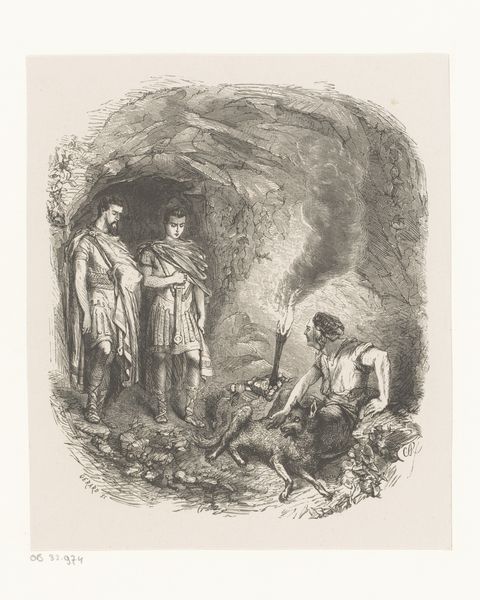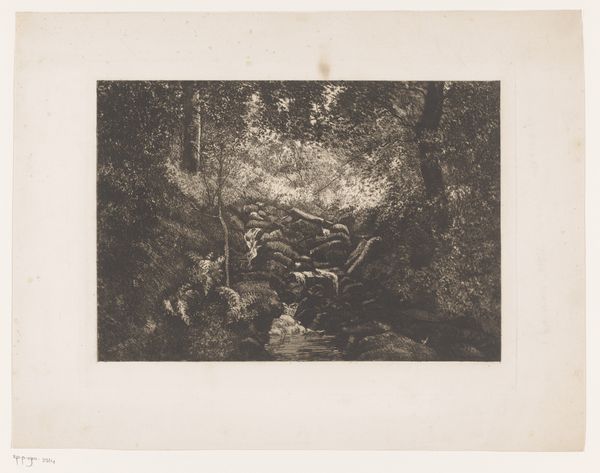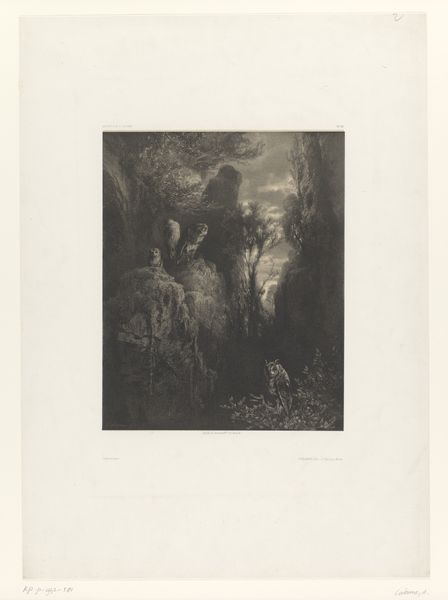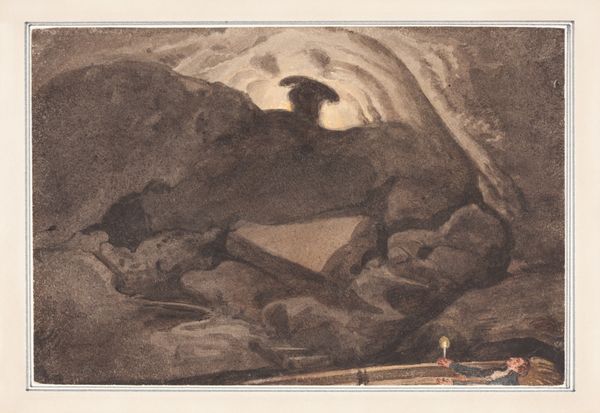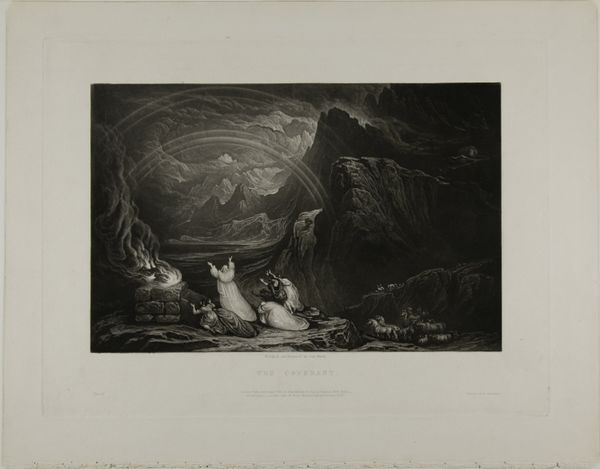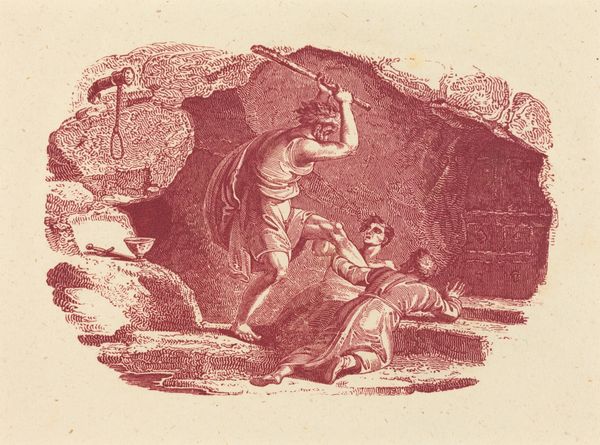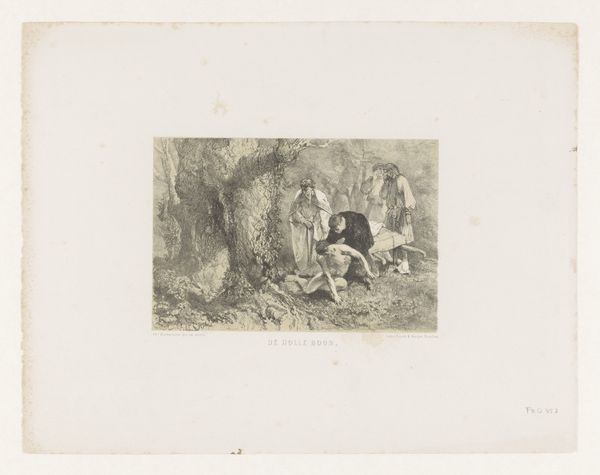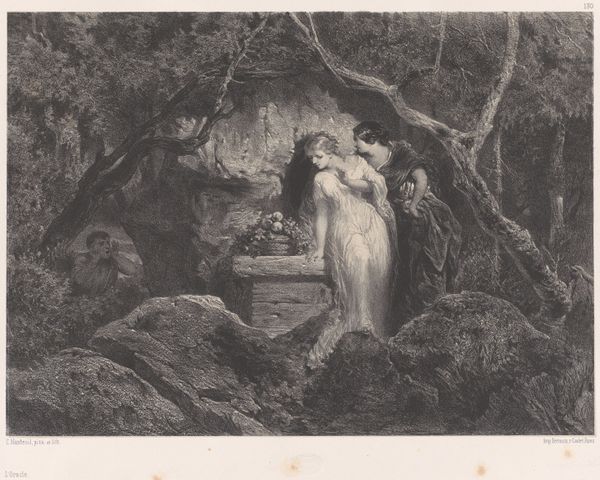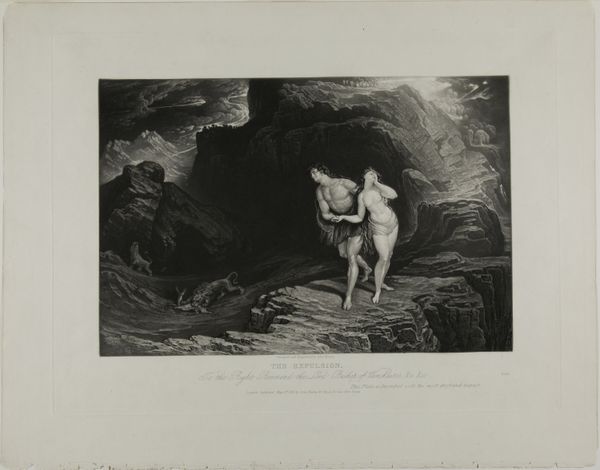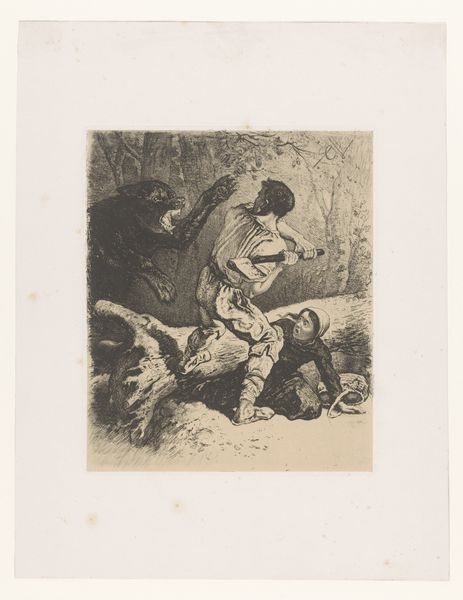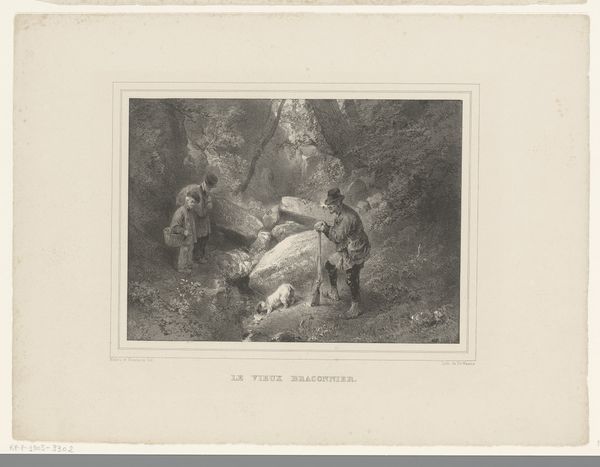
drawing, print
#
drawing
# print
#
landscape
#
romanticism
#
history-painting
Dimensions: Sheet: 11 1/4 × 17 1/4 in. (28.6 × 43.8 cm)
Copyright: Public Domain
Curator: This print by Célestin Nanteuil, dating from 1825 to 1835, is titled "Saint Mary of the Jura Mountains". The Met has it categorized as both drawing and print. My immediate reaction is the incredible contrast. The dark cave dominates the composition. Editor: Absolutely. The interplay of light and shadow evokes a powerful sense of seclusion, almost as if these figures are purposefully hidden. Who do you think this imagery speaks to, especially within the context of Romanticism? Curator: Well, prints were increasingly common means of production, circulating imagery more widely. And the technique used here would dictate how it looks - what kind of paper was used, the quality of the tools used, and of course, the choices the artist makes given that medium. It gives Romanticism a mass audience. Editor: Interesting. And I would suggest that, placing the Virgin Mary and infant Jesus within a dark cave environment subtly critiques institutional religious power structures. Here we see a marginalized Madonna seeking refuge, a commentary on societal struggles of the time. It’s not just a devotional image, but a visual response to gender, power and the search for safe spaces, as a history-painting as much as a biblical scene. Curator: Certainly, it’s important to consider how this Romantic print, as a commodity, might have been perceived in the 19th-century marketplace. The imagery resonates with the tradition of landscape, but the social commentary adds another dimension to it. Who was buying and distributing this image? What would it have cost to obtain this piece, and did that affect its reception? Editor: The act of refuge suggests a larger dialogue about displacement and sanctuary—particularly relevant even today. Seeing Mary not in triumph, but seeking shelter—changes how we read ideas about motherhood, nationhood, faith. The artist offers that humble moment, even as the means by which it was made, and the question of where it ended up after creation, raises new contexts. Curator: Exactly. The material circumstances surrounding its creation, and circulation help us grasp its significance in a more complete way. Thank you for unpacking it further! Editor: Likewise, this deeper appreciation underscores how artistic choices often intersect with and reflect cultural tensions.
Comments
No comments
Be the first to comment and join the conversation on the ultimate creative platform.

